
Browse an alphabetical list of photographs. These historical images portray people, places, and events before, during, and after World War II and the Holocaust.
<< Previous | Displaying results 2626-2641 of 2641 for "Photo" | Next >>
A group of young girls poses in a yard in the town of Ejszyszki (Eishyshok). The Jews of this shtetl were murdered by the Einsatzgruppen on September 21, 1941. Photo taken before September 1941.
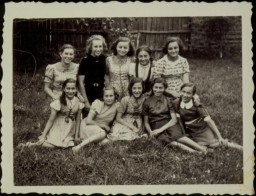
A brother and sisters, members of a Jewish family. One of the sisters pictured here, along with other family members, did not survive the Holocaust. Nove Zamky, Czechoslovakia, May 1944.
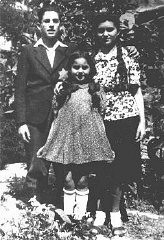
This photograph taken soon after liberation shows young camp survivors from Buchenwald's "Children's Block 66"—a special barracks for children. Germany, after April 11, 1945.
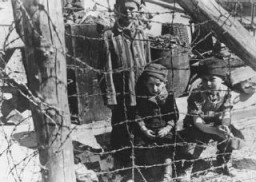
Young survivors of the Buchenwald concentration camp soon after liberation. Germany, April-June 1945.
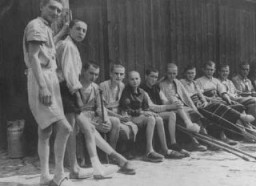
Children in the Bad Reichenhall displaced persons camp. Germany, 1945.
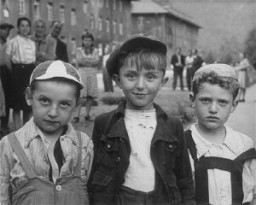
The Kloster Indersdorft displaced persons camp opened in July 1945. By mid-September, 1945, 192 boys and girls from thirteen nations, including 49 Jewish children, were sheltered at Kloster Indersdorf, more than double what had been anticipated. Over the next year, the numbers increased to over 300. Five hours each day were allocated to education. Teachers were drawn from the staff as well as the local community. Many of the children had few or no literacy skills; they also benefitted from art, music,…
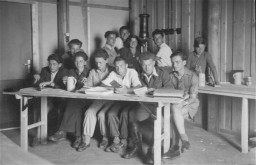
Youths with camp numbers tattooed on their arms aboard Aliyah Bet ("illegal" immigration) ship Mataroa, at the Haifa port. They were denied entry and were deported to Cyprus detention camps. Palestine, July 15, 1945.
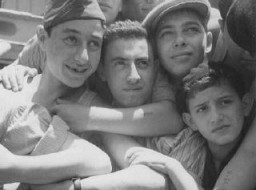
Mr. Mandil and his son Gavra, Yugoslav Jews, while in hiding. The Mandil family escaped to Albania in 1942. After the German occupation in 1943, Mandil's Albanian apprentice hid the family, all of whom survived. Albania, between 1942 and 1945.
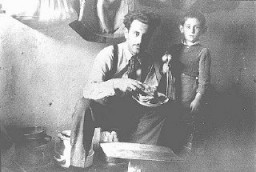
Yugoslav partisan leaders Josip Broz Tito (left) and Mosa Pijade (right). Pijade was a Jewish partisan with the Communist resistance. Yugoslavia, between 1941 and 1944.

View of the Zeilsheim displaced persons camp. Zeilsheim, Germany, 1945.
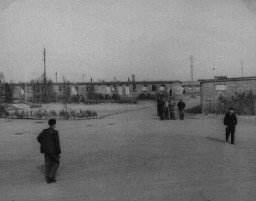
Prewar portrait of mother and son Zeni and Rudy Farbenblum. Munkacs, 1922.
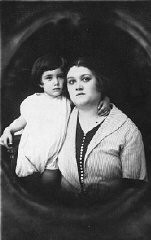
Zivia Lubetkin, a founder of the Jewish Fighting Organization (ZOB) and participant in the Warsaw ghetto uprising. Poland, date uncertain.
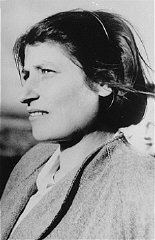
Witness Zivia Lubetkin Zuckerman testifies during the trial of Adolf Eichmann. Jerusalem, Israel. May 3, 1961.
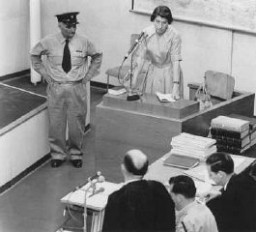
Zsofi Brunn and members of her family were deported from Hungary to Auschwitz-Birkenau in June 1944. Her husband and mother were killed upon arrival. Zsofi and her daughter Anna were transferred to a labor camp in Czechosovakia. They were eventually liberated by Soviet forces in May 1945. Zsofi and Anna returned to Hungary. They moved to Rakosszentmihaly, near Budapest. There, Anna finished high school, and Zsofi directed a Jewish orphanage. This photo shows Zsofi (back row, center) posing with the…
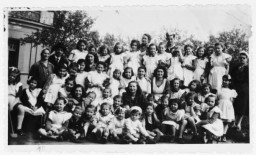
Zvi Ben-Yaakov (left) and Haviva Reik (center), Jewish parachutists under British command. Their mission was to aid the Jews in Czechoslovakia, where they were caught by the Nazis and executed. Palestine, before September 1944.
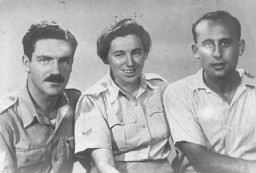
Zyklon B pellets found at the liberation of the Majdanek camp. Poland, after July 1944.

We would like to thank Crown Family Philanthropies, Abe and Ida Cooper Foundation, the Claims Conference, EVZ, and BMF for supporting the ongoing work to create content and resources for the Holocaust Encyclopedia. View the list of donor acknowledgement.